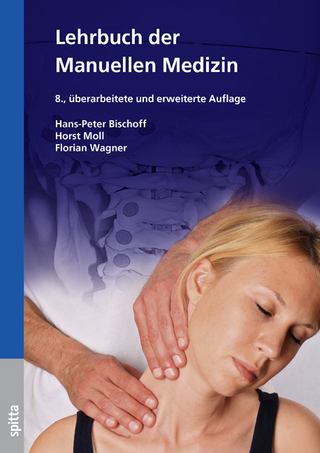
Trance and Treatment
American Psychiatric Association Publishing (Verlag)
978-1-58562-190-3 (ISBN)
What is hypnosis? Despite widespread misconceptions, hypnosis is not a treatment in itself; instead, it is a facilitator—a useful diagnostic tool that can help the practitioner choose an appropriate treatment modality and accelerate various primary treatment strategies.
The second edition of this remarkable work (first published 25 years ago) is written to provide both beginning and seasoned practitioners with a brief, disciplined technique for mobilizing and learning from an individual's capacity to concentrate. Putting to rest both exaggerated fears about hypnosis and overblown statements of its efficacy, this compelling volume brings scientific discipline to a systematic exploration of the clinical uses and limitations of hypnosis.
The challenge was to develop a clinical measurement that could transform a fascinating amalgam of anecdotes, speculations, clinical intuitions and observations, and laboratory advances into a more fruitful and systematic body of information. Thus was born the authors' Hypnotic Induction Profile (HIP), a crucial 10-minute clinical assessment procedure that relates the spectrum of hypnotizability to personality style, psychopathology, and treatment outcome.
Structured to reflect the flow of a typical evaluation and treatment session and highlighted by case examples throughout, this remarkable synthesis describes how to use the HIP, reviews relevant literature, and details principles and short- and long-term treatment strategies for smoking control; eating disorders; anxiety, concentration, and insomnia; phobias; pain control; psychosomatic disorders and conversion symptoms; trichotillomania; stuttering; and acute and posttraumatic stress disorders and dissociation. Meticulously referenced and indexed, this in-depth work concludes with an appendix on the interpretation and standardization of the HIP.
This unique work stands out in the literature because
• It is written both as an introduction for practitioners new to hypnosis and as an in-depth guide for practitioners with wide experience in hypnosis.
• Unlike current clinical works, it emphasizes the importance of performing a systematic assessment of hypnotizability to identify, measure, and utilize a given patient's optimal therapeutic potential—a process that, until now, has been relegated to clinical intuition.
• It describes human behavior phenomenologically as it relates to hypnosis in a probable rather than an absolute fashion.
• It reviews only specific portions of the literature that are particularly relevant to the important themes presented by the authors. Wherever possible, the authors apply statistical methods to test their hypotheses.
The realm of scientific investigation encompassing hypnosis and psychological dysfunction is comparatively new. This exceptional volume, with its profusion of systematic data, will spark controversy and interest among scientific students of hypnosis everywhere, from psychiatrists, psychologists, and psychoanalysts to physicians, dentists, and other interested clinicians.
Herbert Spiegel, M.D., is Clinical Professor of Psychiatry (Emeritus) at Columbia University, College of Physicians & Surgeons, where he directed the postgraduate course in hypnosis from 1960 to 1982. Currently at Columbia, he is Special Lecturer in Psychiatry and in private practice in New York City. David Spiegel, M.D., is the Jack, Lulu and Sam Willson Professor in the School of Medicine, Associate Chair of Psychiatry and Behavioral Sciences, and Medical Director of the Center for Integrative Medicine at Stanford University Medical Center.
Preface
Acknowledgments
Prologue
About the Authors
PART I: Trance: The Phenomenon and Its Measurement
Defining Hypnosis
Chapter 1. Naturally Occurring Trance Phenomena and Related Myths
Chapter 2. Formally Induced Trance Phenomena
The Hypnotic Induction Profile
Chapter 3. Rationale for a Clinical Test
Chapter 4. Administration and Scoring
PART II: The Hypnotic Induction Profile as a Diagnostic Probe
Spectrum of Hypnotizability and Personality Style
Chapter 5. The Person With the Problem: Apollonians, Odysseans, and Dionysians
Chapter 6. Review of the Literature: Hypnotizability and Personality
Nonintact Profiles: Softs and Decrements
Chapter 7. Hypnotizability and Severe Psychopathology
Chapter 8. Neurophysiology of Hypnosis
PART III: Using Hypnosis in Treatment
Principles
Chapter 9. Formulating the Problem
Chapter 10. Restructuring
Treatment Strategies: Short Term
Chapter 11. Smoking Control
Chapter 12. Eating Disorders
Chapter 13. Anxiety, Concentration, and Insomnia
Chapter 14. Phobias
Chapter 15. Pain Control
Chapter 16. Psychosomatic Disorders and Conversion Symptoms
Chapter 17. Miscellaneous Behavior Disorders
Treatment Strategies: Long Term
Chapter 18. Spectrum of Therapies
Chapter 19. The Grade 5 Syndrome: Special Considerations in Treating the Dionysian
Chapter 20. Hypnosis in the Treatment of Acute Stress Disorder, Posttraumatic Stress Disorder, and Dissociation
Epilogue
Appendix: Interpretation and Standardization of the Hypnotic Induction Profile
References
Name Index
Subject Index
| Erscheint lt. Verlag | 18.6.2004 |
|---|---|
| Zusatzinfo | 19 Tables, unspecified; 29 Line drawings, black and white |
| Verlagsort | VA |
| Sprache | englisch |
| Maße | 152 x 229 mm |
| Gewicht | 771 g |
| Themenwelt | Medizin / Pharmazie ► Naturheilkunde |
| ISBN-10 | 1-58562-190-0 / 1585621900 |
| ISBN-13 | 978-1-58562-190-3 / 9781585621903 |
| Zustand | Neuware |
| Haben Sie eine Frage zum Produkt? |
aus dem Bereich


